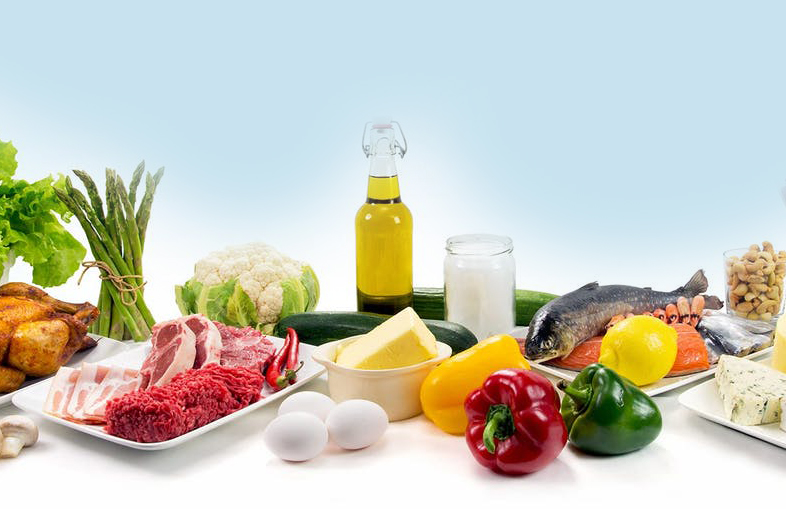
A low-carb diet is low in carbohydrates, primarily found in sugary foods, pasta and bread. Instead, you eat whole foods including natural proteins, fats and vegetables.
Studies show that low-carb diets result in weight loss and improved health markers.These diets have been in common use for decades and are recommended by many doctors. Best yet, there’s usually no need to count calories or use special products. All you need to do is to eat whole foods that make for a complete, nutritious and filling diet.
Foods to eat
- Meat: Any type: Beef, pork, lamb, game, poultry, etc.
Feel free to eat the fat on the meat as well as the skin on the chicken.
You may want to choose organic or grass-fed meats.
- Fish and seafood: All kinds: Fatty fish such as salmon, mackerel, sardines or herring are great, and might even have health benefits due to high amounts of omega-3 fatty acids.
Avoid breading.
- Eggs: All kinds: Boiled, fried, scrambled, omelets, etc. You may want to choose organic eggs, if possible.
- Natural fats and high-fat sauces: Using butter and cream for cooking can make your low-carb foods taste better and can make you feel more satisfied. Try a Béarnaise or Hollandaise sauce. If purchased pre-made, check the ingredients for starches and vegetable oils. Better yet, make it yourself. Coconut fat or olive oil are also good options. These are all healthy fats.
- Vegetables that grow above ground: Cauliflower, broccoli, cabbage and Brussels sprouts, kale, collards, bok choy, spinach, asparagus, zucchini, eggplant, olives, spinach, mushrooms, cucumber, avocado, onions, peppers, tomatoes, lettuce, other kinds of leafy greens etc. These are lowest in net carbs and can be enjoyed at all levels of carb restriction. However, if you are following a keto diet (< 20 grams of carbs per day), you may need to limit your portions for certain types, like bell peppers and Brussels sprouts.
- Dairy products: Feel free to choose full-fat options like real butter, cream (40% fat), sour cream, Greek/Turkish yogurt and high-fat cheeses, which can help you stay full and satisfied. Be careful with regular milk, reduced fat and skim milk as they contain a lot of milk sugar. Avoid flavored, sugary and low-fat products.
- Nuts: Great for a treat (in moderation) instead of popcorn, candy or chips.
- Berries: Okay in moderation, if you do not need to be super strict with carbs. Great with whipped cream.
What to Drink
- Water – Try to make this your drink of choice, flavored or sparkling water is fine too, but be sure to read the ingredients list to check for added sugars. Alternatively look at the carbs section on the nutrition label.
- Coffee – Black or with small amounts of milk or cream is ideal for weight loss. Beware of adding lots of milk or cream, especially if you drink coffee regularly throughout the day, even when you’re not hungry. But if you are hungry feel free to use full-fat cream. Or try it with coconut oil and butter – “Bulletproof coffee”.
- Tea – The information for coffee above applies to tea too.
Top 10 low-carb vegetables

Here are ten great low-carb vegetables, tasty and rich in nutrients but with very few carbs:
All numbers are net carbs per 100 grams (3½ ounces).
1. Cauliflower – 3 g. Perhaps the most classic and iconic of all low-carb vegetables. The base of cauliflower rice and cauliflower mash. See cauliflower gnocchi recipe.
2. Cabbage – 3 g. Another great low-carb vegetable. Who doesn’t love butter-fried green cabbage or the simply amazing Asian cabbage stir-fry? See this low-carb stuffed cabbage enchiladas recipe.
3. Avocado – 2 g. Not just low carb, but also full of nutritious fat. Technically a fruit, but most people likely think of it as a vegetable. Avocado can be eaten in all kinds of ways, including on its own, in salads, or it can be used to make guacamole. Try chicken taco avocados.
4. Broccoli – 4 g. Another great option that can replace pasta, rice or potatoes. Just fry it in butter or add some cheese for great-tasting side dishes. Try cauliflower fritters with halloumi and broccoli.
5. Zucchini – 3 g. Try our zucchini fries or zucchini chips. Zucchini can also be used to make low-carb pasta, like in this low-carbonara.
6. Spinach – 1 g. An extremely low-carb vegetable, spinach is full of vitamins and minerals and can be used many ways.
7. Asparagus – 2 g. Revered as both a food and medicine – and aphrodisiac – by the ancient Egyptians, Greeks and Romans up to medieval times, asparagus is one of the world’s oldest cultivated vegetables. Try this ham and asparagus roll ups.
8. Kale – 3 g. Hardier than spinach, less watery, but just as nutrient-rich, kale can stand up to mincing, sautéing, baking, and much more.
9. Green beans – 4 g. Frenched, diced and tossed in a salad, fricasseed and more, green beans taste great especially with added fats like butter, an olive-oil vinaigrette, or bacon.
10. Brussels sprouts – 5 g. Nutty, filling and nutritious, they are especially good roasted with olive oil and garlic, or with bacon. Try baked cod fillets with brussels sprouts.
Website: www.dietdoctor.com

